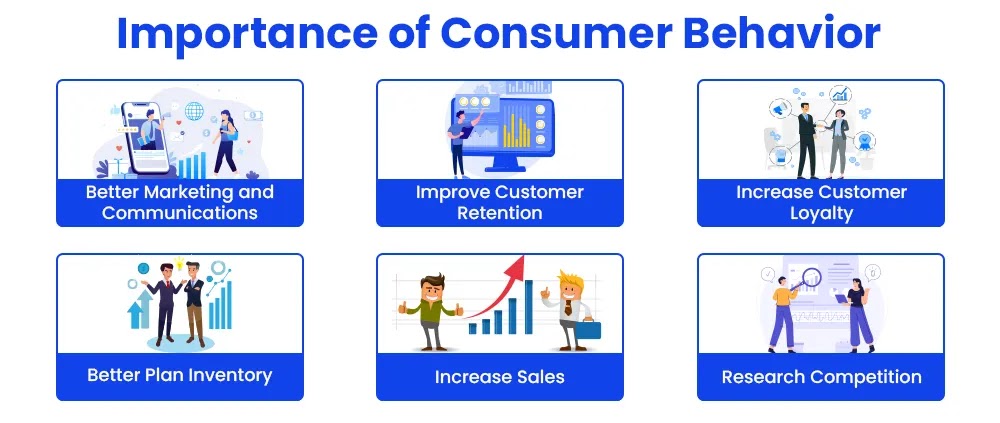Understanding Consumer Behavior Online
Consumer behavior online is a dynamic and complex field influenced by various factors, including technological advancements, psychological triggers, and evolving consumer expectations. Understanding how consumers interact, engage, and make decisions in the digital space is crucial for businesses aiming to create effective marketing strategies and enhance customer experiences. This article explores key aspects of consumer behavior online and provides insights into how businesses can leverage this understanding to drive engagement and growth.
Factors Influencing Consumer Behavior Online
Technological Advancements: The proliferation of smartphones, social media platforms, and e-commerce websites has transformed how consumers discover, research, and purchase products and services online. Mobile devices, in particular, have facilitated on-the-go browsing and instant access to information, influencing purchase decisions and browsing behaviors.
Psychological Triggers: Online consumer behavior is often influenced by psychological factors such as emotions, perceptions, attitudes, and motivations. Factors like social proof (e.g., reviews and testimonials), scarcity (e.g., limited-time offers), and reciprocity (e.g., free trials or samples) play significant roles in shaping purchasing decisions and consumer loyalty.
User Experience (UX): The usability, design, and functionality of websites and mobile apps greatly impact consumer behavior online. Positive user experiences, including intuitive navigation, fast loading times, secure payment gateways, and personalized recommendations, contribute to higher engagement and conversion rates.
Consumer Trust and Reputation: Trustworthiness, credibility, and online reputation heavily influence consumer decisions. Reviews, ratings, and recommendations from peers or influencers can sway purchasing choices, while transparent communication, ethical business practices, and secure transactions build trust and foster long-term relationships.
Online Consumer Journey
The online consumer journey consists of multiple stages that consumers typically progress through before making a purchase:
Awareness: Consumers become aware of a product or service through various channels, including search engines, social media, online ads, or word-of-mouth recommendations.
Consideration: Consumers research and compare options, exploring product features, reading reviews, and evaluating pricing and benefits to determine the best fit for their needs.
Decision: Consumers make a purchase decision based on the information gathered, influenced by factors like price, quality, brand reputation, and perceived value.
Post-Purchase: After making a purchase, consumers may provide feedback, share their experience on social media, seek customer support, or consider repeat purchases based on their satisfaction with the product and service.
Strategies for Businesses to Understand and Influence Consumer Behavior
Data Analytics: Utilize web analytics tools, CRM systems, and consumer behavior analysis to gather and analyze data on user interactions, preferences, and purchase patterns. Insights derived from data analytics can inform personalized marketing campaigns, product recommendations, and targeted messaging to enhance relevance and engagement.
Customer Feedback and Surveys: Solicit feedback through surveys, customer reviews, and social media interactions to gain insights into consumer preferences, pain points, and satisfaction levels. Actively listening to customer feedback enables businesses to identify areas for improvement and tailor their offerings to meet customer expectations.
Personalization and Customization: Leverage data-driven personalization techniques to deliver tailored experiences based on consumer preferences, browsing history, and previous interactions. Personalized recommendations, targeted promotions, and customized content enhance engagement, foster brand loyalty, and increase conversion rates.
Omni-channel Marketing: Adopt an omni-channel approach to provide a seamless and consistent experience across multiple touchpoints, including websites, social media, mobile apps, email marketing, and physical stores (if applicable). Integration across channels enables businesses to meet consumers wherever they are in their journey and facilitate a cohesive brand experience.
Ethical Considerations and Consumer Privacy
As businesses collect and utilize consumer data to understand behavior and personalize experiences, it's essential to prioritize consumer privacy and adhere to data protection regulations (e.g., GDPR, CCPA). Transparent data practices, secure data handling procedures, and obtaining consent for data usage are critical to building trust and maintaining ethical standards in online marketing efforts.
Conclusion
Understanding consumer behavior online is fundamental for businesses aiming to drive engagement, build relationships, and achieve sustainable growth in the digital era. By recognizing the influences, stages, and dynamics of the online consumer journey, businesses can implement informed strategies, leverage data-driven insights, and deliver personalized experiences that resonate with consumers' needs and preferences. Continuously adapting to evolving consumer behaviors and technological advancements will enable businesses to stay competitive, foster customer loyalty, and capitalize on opportunities in the dynamic digital marketplace.

